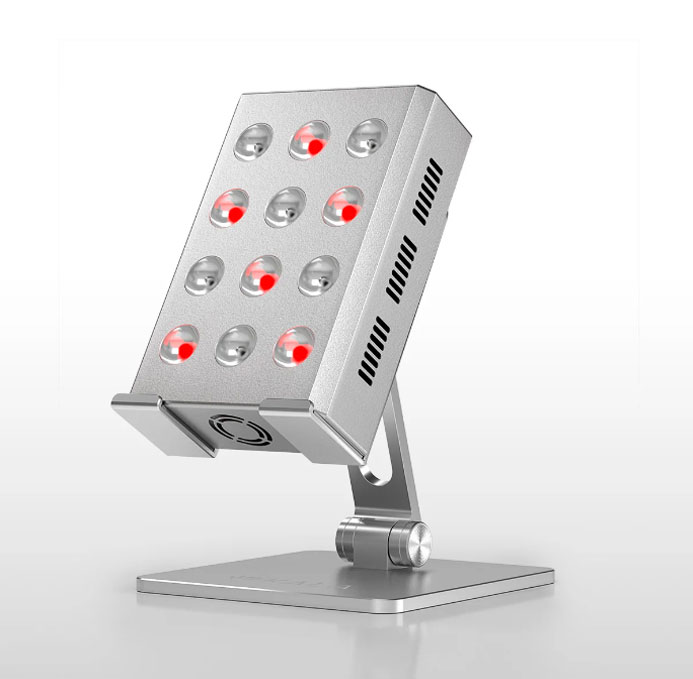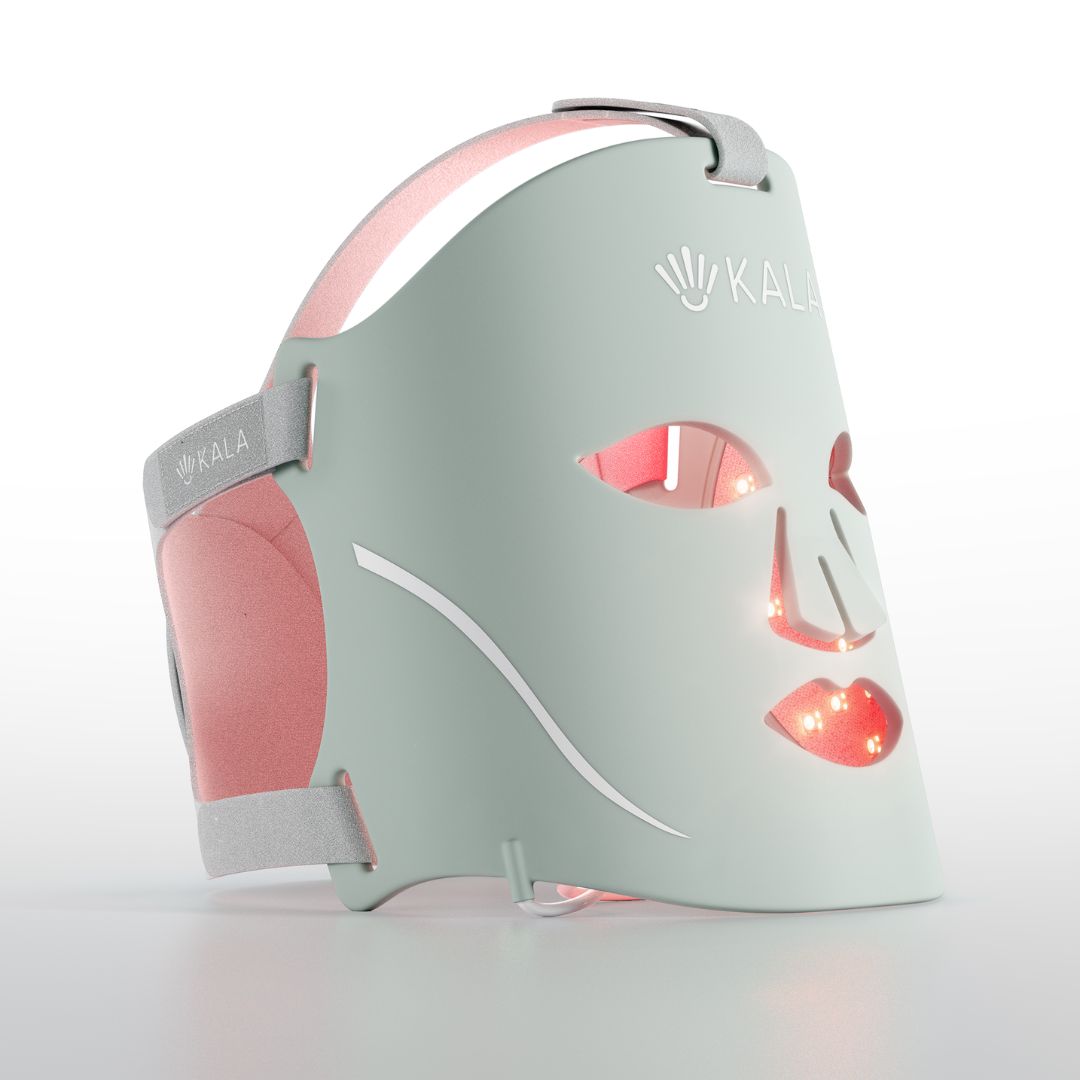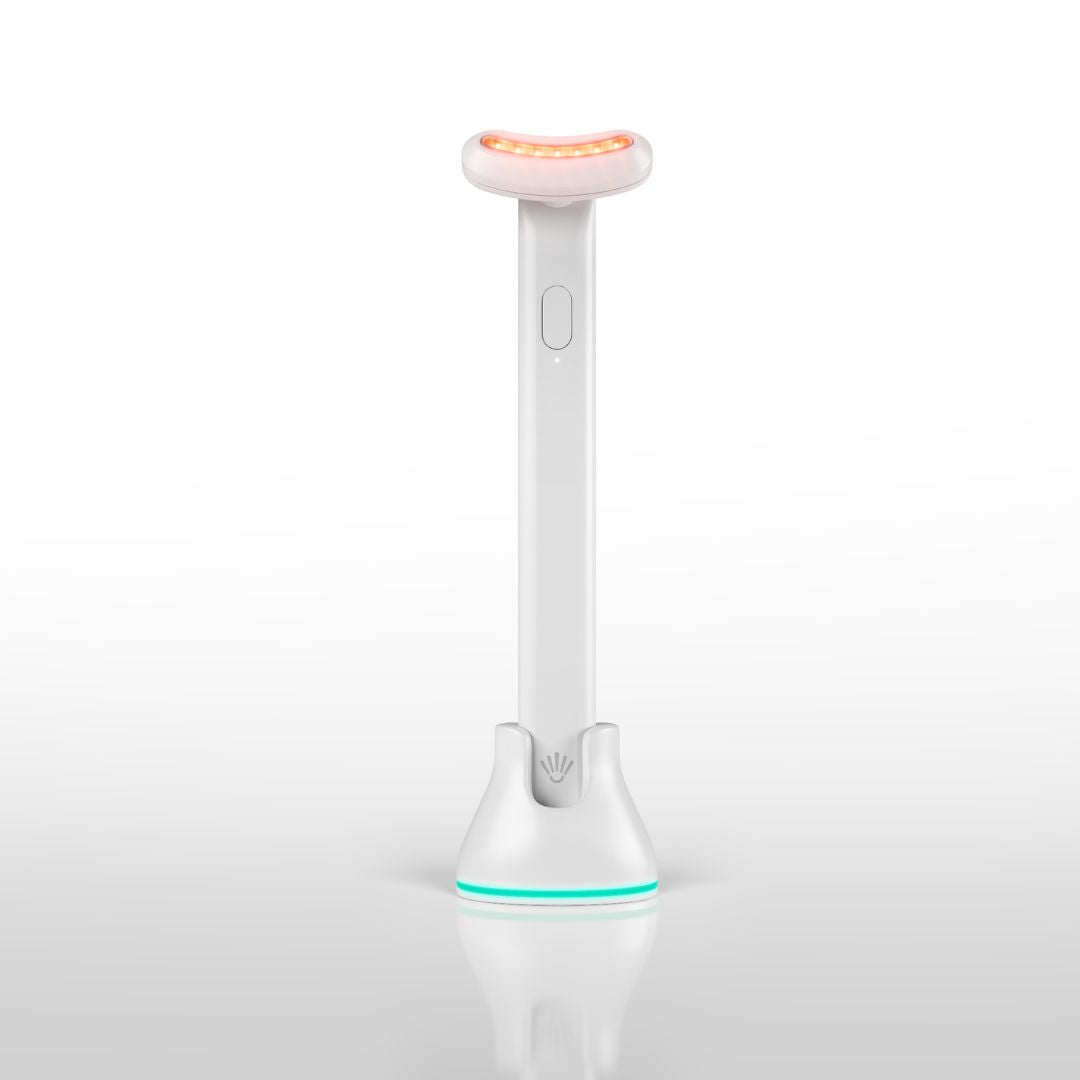
Table of Contents
Red Light Therapy as an Acne Treatment: Mechanisms, Benefits, and Clinical Studies
Book Your Free Consultation Today Or Call (647) 560-9233
By providing your phone number you agree to receive informational text messages from laserskin.ca. Consent is not a condition of purchase. Message frequency will vary. Msg & data rates may apply. Reply HELP for help or STOP to cancel.
Introduction
Acne is one of the most prevalent skin conditions worldwide, impacting millions of individuals across all ages. It is characterized by developing pimples, blackheads, whiteheads, and, in severe cases, cysts or nodules, leading to scarring and lasting skin damage. The cause of acne is multifactorial, including excess sebum production, clogged pores, bacteria (especially Propionibacterium acnes or P. acnes), and inflammation. Traditional acne treatments range from topical solutions, like benzoyl peroxide and salicylic acid, to oral antibiotics, retinoids, and hormonal therapies. However, in recent years, red light therapy has emerged as a promising non-invasive treatment for acne.
This article delves into red light therapy as an effective acne treatment, covering its mechanisms, benefits, and supporting evidence from clinical studies.
Understanding Red Light Therapy
Red light therapy, commonly known as low-level light therapy (LLLT) or photobiomodulation (PBM), utilizes specific red light wavelengths, usually in the range of 630 to 660 nanometers (nm), to penetrate the skin. The cells, particularly those within the mitochondria, absorb the light, triggering various biological functions. In contrast to UV light, which can cause skin damage and contribute to skin cancer, red light therapy is non-thermal and does not cause harmful effects. Instead, it promotes healing, reduces inflammation, and enhances cellular function.
How Red Light Therapy Works for Acne
Red light therapy targets three primary factors in acne formation: inflammation, bacteria, and skin healing.
- Anti-Inflammatory Effects
Inflammation is a critical component of acne, especially in its more severe forms. When sebaceous glands generate excess sebum, it can merge with dead skin cells, leading to blocked hair follicles and an inflammatory response. This results in red, swollen acne lesions. Red light therapy helps reduce this inflammation by stimulating anti-inflammatory processes within the skin. It modulates the production of pro-inflammatory cytokines and mediators responsible for triggering inflammation. By calming inflammation, red light therapy helps stop new acne lesions from forming and lessen the severity of existing ones.
- Bacterial Suppression
P. acnes, a bacteria residing on the skin, significantly contributes to acne. This bacterium can grow in the blocked pores and exacerbate inflammation, leading to more severe acne. Red light therapy has been shown to suppress the growth of P. acnes bacteria. While blue light therapy is typically used for its bactericidal effects due to its shorter wavelength (around 415 nm), red light therapy supports this process by reducing bacterial colonization through its anti-inflammatory and immune-boosting properties.
- Enhanced Skin Healing and Repair
Red light therapy promotes tissue repair and accelerates the healing of damaged skin by increasing adenosine triphosphate (ATP) production inside the mitochondria. ATP is the cell’s primary energy provider, and with increased ATP production, skin cells can regenerate faster, leading to quicker recovery from acne lesions and less risk of scarring. Red light therapy also stimulates collagen production, improving skin texture and helping smooth post-acne scarring or pitted areas.
Research Studies on Red Light Therapy for Acne
Several research studies have assessed the effectiveness of red light therapy in treating acne, particularly when combined with blue light therapy. Some key studies highlight the benefits of red light therapy for acne management.
- Study 1: Combination of Red and Blue Light Therapy for Acne
A study featured in The Journal of Cosmetic and Laser Therapy (2007) assessed the efficacy of combined blue and red light therapy in treating acne. The study involved 24 patients with mild to moderate acne. The participants underwent treatment twice weekly for four weeks using a combination of blue light (415 nm) and red light (660 nm).
The findings showed a substantial decrease in both inflammatory and non-inflammatory acne lesions. By the end of the study, there was an average reduction of 76% in inflammatory lesions and a 58% reduction in non-inflammatory lesions. The researchers concluded combining blue and red light therapy was effective and well-tolerated for treating acne.
- Study 2: Red Light Therapy Alone for Acne Treatment
A study by Dr. Tony Chu and colleagues, published in The Journal of Dermatological Treatment (2009), investigated the effectiveness of red light therapy alone for treating acne. This study involved 30 patients with mild to moderate acne treated with red light therapy for 15 minutes twice a week over 12 weeks. The participants showed a 60% reduction in acne lesions by the end of the study, with minimal side effects. The researchers noted that red light therapy significantly reduced inflammation and contributed to faster healing of acne lesions.
- Study 3: Blue and Red Light Therapy Compared to Benzoyl Peroxide
Another study published in The British Journal of Dermatology (2000) compared the effectiveness of combining blue and red light therapy to traditional benzoyl peroxide treatment. The study involved 107 patients with mild to moderate acne.
The participants were split into two groups: one group was given combined blue and red light therapy, while the other group used a 5% benzoyl peroxide topical treatment. The light therapy group underwent treatments twice a week for 12 weeks. The study found that the group receiving light therapy experienced a 76% reduction in acne lesions compared to a 61% reduction in the benzoyl peroxide group. The researchers concluded that blue and red light therapy was a highly effective treatment option, with fewer side effects than benzoyl peroxide, such as dryness and irritation.
- Study 4: Red Light Therapy for Post-Acne Scarring
Red light therapy’s role in promoting collagen production and skin healing has also been studied in the context of post-acne scarring. A study published in Lasers in Surgery and Medicine (2010) evaluated red light therapy for improving the appearance of acne scars.
The study included 32 patients with moderate to severe acne scars. Participants underwent red light therapy sessions three times weekly for eight weeks. Results indicated significant enhancements in skin texture, diminished scarring, and a smoother skin appearance. The study concluded that red light therapy holds promise as a treatment for minimizing acne scars by stimulating skin regeneration and collagen production.
- Study 5: Red Light Therapy as an Adjunctive Acne Treatment
A 2018 study published in Photodermatology, Photoimmunology & Photomedicine examined red light therapy as an adjunctive treatment alongside standard acne therapies. The study involved 40 patients with moderate to severe acne who were divided into two groups: one group received standard acne treatments (topical retinoids and oral antibiotics). In contrast, the other group received the same treatments plus red light therapy twice weekly for eight weeks. The results showed that the group receiving red light therapy experienced a significantly faster reduction in acne lesions and less skin irritation than standard treatments alone. This study supports using red light therapy as a supplementary treatment to boost the effectiveness of conventional acne therapies.
Benefits of Red Light Therapy for Acne
The clinical studies mentioned above highlight several benefits of red light therapy as an acne treatment, including:
- Reduction of Inflammatory Acne
Red light therapy effectively reduces inflammatory acne by calming inflammation within the skin and promoting healing. - Minimal Side Effects
In contrast to traditional acne treatments like benzoyl peroxide, retinoids, or antibiotics, red light therapy is non-invasive and avoids causing irritation, dryness, or peeling. It is typically well-suited for most skin types.
- Reduced Acne Scarring
Beyond addressing active acne, red light therapy stimulates collagen production and aids tissue repair, gradually diminishing the appearance of acne scars. This makes it a strong option for those susceptible to post-acne scarring. - Non-Invasive and Painless
As a non-invasive and painless option, red light therapy requires no downtime, making it ideal for those with demanding schedules who cannot afford the recovery time linked to more invasive procedures. - Compatible with Other Treatments
Red light therapy can be safely paired with other acne treatments.
How to Use Red Light Therapy for Acne
When using red light therapy for acne, you should follow specific guidelines to achieve optimal results.
- 1. Treatment Frequency
Most clinical studies recommend using red light therapy for 10 to 20 minutes per session, two to three times weekly. Consistency is key to seeing improvements as the therapy’s cumulative effects build over time. Results often become noticeable after 4 to 6 weeks of consistent use.
- 2. Choosing a Device
Various red light therapy devices are available, ranging from professional-grade machines used in dermatology clinics to handheld or at-home devices. When used consistently, at-home devices can effectively address mild to moderate acne with regular use. Professional devices, such as those used in clinics, may offer stronger output and can benefit individuals with more severe acne.
- 3. Maintenance Treatments
After the initial treatment phase (4 to 6 weeks), many people continue with maintenance treatments to sustain their results. Maintenance sessions may be reduced to once or twice weekly depending on individual needs and skin response.
- 4. Combination Therapy
Red light therapy can be combined with other treatments, such as blue light therapy (to target acne-causing bacteria), topical retinoids, and chemical exfoliants for enhanced results. It is important to consult a healthcare professional or dermatologist before combining treatments to verify their compatibility and prevent potential adverse reactions.
Conclusion
Red light therapy offers a promising, noninvasive solution for treating acne, particularly for individuals who suffer from inflammatory acne or post-acne scarring. By reducing inflammation, supporting skin healing, and promoting collagen production, red light therapy addresses the core factors contributing to acne while minimizing the risk of side effects common with other treatments.
Research has demonstrated notable improvements in acne lesions, skin texture, and overall appearance with consistent red light therapy. Whether applied as a standalone treatment or alongside other therapies, red light therapy offers a secure and effective option for individuals pursuing a holistic strategy for acne management. Those interested in red light therapy should seek guidance from a dermatologist or skincare expert, which is a safe and efficient choice for people seeking a more holistic way to address acne.



